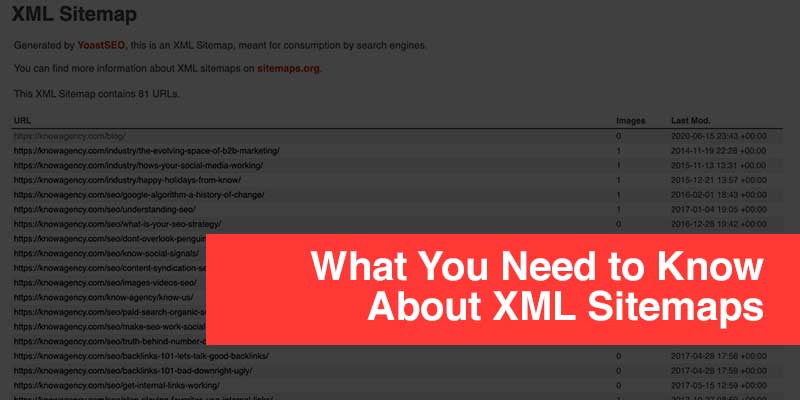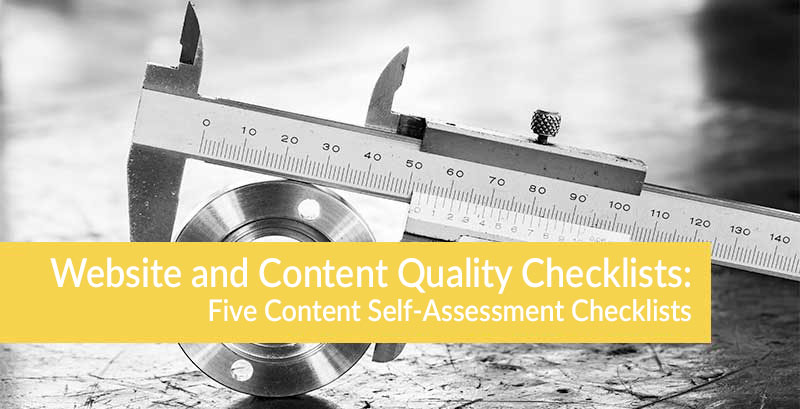An XML sitemap tells Google and other search engines what your important web pages are and how they are connected. Search engines use the sitemap to navigate your website to understand what kind of content you have on your website and how pages are linked.
This is what Google says about XML sitemaps:
A sitemap is a file where you provide information about the pages, videos, and other files on your site, and the relationships between them. Search engines like Google read this file to more intelligently crawl your site. A sitemap tells Google which pages and files you think are important in your site, and also provides valuable information about these files: for example, for pages, when the page was last updated, how often the page is changed, and any alternate language versions of a page.
Sitemaps are an important part of your technical SEO strategy. You can have the best content, an amazing brand, and a buzzing social media presence, but if your technical SEO is letting you down, you won’t get the traffic and engagement you want.
In this blog, I give you the facts on XML sitemaps and links to articles that dig deeper into the technical aspects of XML sitemaps. By the end of this blog, you’ll know what XML sitemaps are, why they matter to your website, what to include in your sitemap, and how to create and submit a sitemap to search engines.
Why Your Website Needs an XML Sitemap
Your website needs an XML sitemap because it is the best way to tell search engines which pages, files, and content are the most important on your website. Search engines like Google use the XML sitemap to understand what your area of expertise is and to gain insight into how frequently you update page content.
Hint: this is one of the reasons why we want you to refresh your website content. Google likes to know that you’re actively providing readers with the latest information in the most easily readable formats.
To spell it out in simple terms: an XML sitemap helps your SEO.
You want to make it easy for Google and other search engines to crawl your website and list your content, videos, images, and URLs in the search engine results page (SERP).
Google makes it very clear why your website needs an XML sitemap:
- Your site is really large. As a result, it’s more likely Google web crawlers might overlook crawling some of your new or recently updated pages.
- Your site has a large archive of content pages that are isolated or not well linked to each other. If your site pages do not naturally reference each other, you can list them in a sitemap to ensure that Google does not overlook some of your pages.
- Your site is new and has few external links to it. Googlebot and other web crawlers crawl the web by following links from one page to another. As a result, Google might not discover your pages if no other sites link to them.
- Your site has a lot of rich media content (video, images) or is shown in Google News. Google can take additional information from sitemaps into account for search, where appropriate.
What to Include in Your XML Sitemap
Follow these four tips on what to include in your XML sitemap:
- Include the pages that are most important to your website.
- Include the pages you want readers and search engines to find, read, and click.
- Only include pages that contain high-quality content.
- Only include URLs the search engine can access.
Remember, the XML sitemap is important for SEO, so think about your SEO strategy and how you use your website to engage with readers. These priorities should guide your decisions on what to include in your sitemap.
While choosing what to include in your XML sitemap, you might learn your website is missing important pages, has outdated information, or lacks high-quality content… This is a good thing!
Now you can develop a website and content strategy to better engage readers and search engines. Remember, your website (and your XML sitemap) are not static – they always need to be reviewed, refreshed, and updated.
How to Create and Submit an XML Sitemap
The best way to create an XML sitemap is to use a tool. Use a free XML sitemap generator tool such as this list of XML Sitemap Generator Tools from Semrush, Screaming Frog or XML-Sitemaps. Depending on the type of website you have, there are different plugins available for creating an XML sitemap.
You can also create your XML sitemap manually. Make sure you follow the sitemap guidelines and recommendations from Google, Bing, and other search engines.
For detailed steps on how to submit your XML sitemap to Google, Bing and other search engines, follow the instructions in Submit Your Sitemap To Search Engines.
Where to Learn More About XML Sitemaps
XML sitemaps should not be confusing or overwhelming. We do not want you stressing over your sitemap. We can help you with your XML sitemap and any other website, content, and SEO questions you have.
Learn more about XML sitemaps:
- Google: Learn About Sitemaps
- Bing: Sitemaps
- The Plain English Guide to Sitemaps
- How To Use Sitemaps To Boost SEO
About the author
Jane Phelps is the CEO/Partner at Know Agency. Jane leads client SEO strategy and handles all aspects of in-house SEO demands. This includes providing SEO training, competitive analysis, keyword research, algorithm analysis, and the review of all new content to ensure SEO best-practices are followed. Jane holds a Master’s Certificate in Online Marketing from the University of San Francisco, is BrightEdge Certified.



